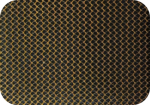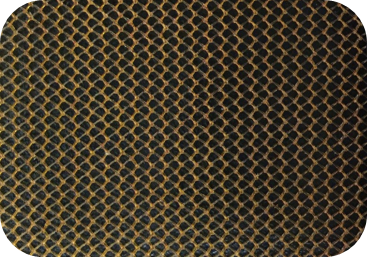A Memphis-based start-up company wants to hit two key issues in the open hernia repair market: surgical site infection and cost-effective technology. Nearly 70% of ventral hernia repairs are open procedures (versus laparoscopic), with a 6–8% incidence of infection following surgery, according to Lisa Jennings, M.D., chief scientific officer, and one of the founders of Ariste Medical. In complex cases involving obese patients, uncontrolled diabetics, or chronic smokers, the incidence of infection can rise as high as 40%.

Ariste Medical is pursuing a drug-eluting mesh for ventral hernia repair that provides antimicrobial activity against common bacteria, including MRSA and E. coli, for at least two weeks—and does so at a controlled rate. An academic invention with origins at the University of Tennessee Health and Science Center, the initial iteration of the antimicrobial-eluting mesh is made with polypropylene (PP). The product differentiator is not only the proprietary formulation, but also the actual process for coating the mesh and the way in which the antimicrobial is embedded to achieve a programmed drug-elution profile (a proprietary polymer carrier is used to deliver the drug). Jennings adds that the two-week drug-elution profile of the mesh is somewhat unique, as drug-elution occurs relatively quickly—within seven days—with many generally coated or dip-coated implants.
The company is working with FDA-approved antimicrobials rifampin and minocycline, because both are active against Gram-negative and Gram-positive bacteria. “There are predicate devices we can point towards that have used these antimicrobials and for that reason, we’ve chosen to continue with those same antimicrobials,” says Jennings, adding that the company will pursue a 510(k) approval pathway for the hernia mesh and is hopeful to get FDA clearance by the first quarter of 2017. From a marketing and sales perspective, Jennings anticipates that the mesh will capture both the biologics and synthetic hernia mesh markets upon approval due to the technology’s biologic activity and competitive pricing.
“Around the time we were developing our product, the cost of biologics was drawing increased scrutiny in that while there may be some benefit in biocompatibility there wasn’t a significant dent made in reducing the infection rate, particularly in patients that were more complex cases,” says Jennings. “Realizing that the cost of infection probably adds another $70,000–$100,000 in the 12 months following surgery, was obviously, along with the lack of impressive data with biologics to prevent infection, what drove the desire for a new alternative and a possible return to a synthetic mesh that has antimicrobial activity.”
A variety of factors, including technical feasibility, clinical need, likelihood of 510(k) clearance, and the need for products to perhaps more adequately address surgical site infection all pointed toward the ventral hernia mesh as Ariste Medical’s initial product. That said, the concept of the mesh could be applied to other devices as well. “If we were to take our technology and put it on a hemodialysis graft, the goal would be to use drugs that target restenosis or scar tissue formation to reduce narrowing of the vessel—anastomosis of the graft to the vessel to have an impact on reducing graft failure or the need to intervene at that site as frequently as necessary,” says Jennings. “We have expertise in coatings formulation, but our goal is to have a platform of products where we have transformed surgical implants into drug-device combination products.” Based on the implant and indication, Ariste Medical can design the drug residence and elution that is most appropriate. On the company’s website, it mentions a dialysis catheter for hemodialysis and a vascular graft for peripheral bypass as additional applications of the technology.




